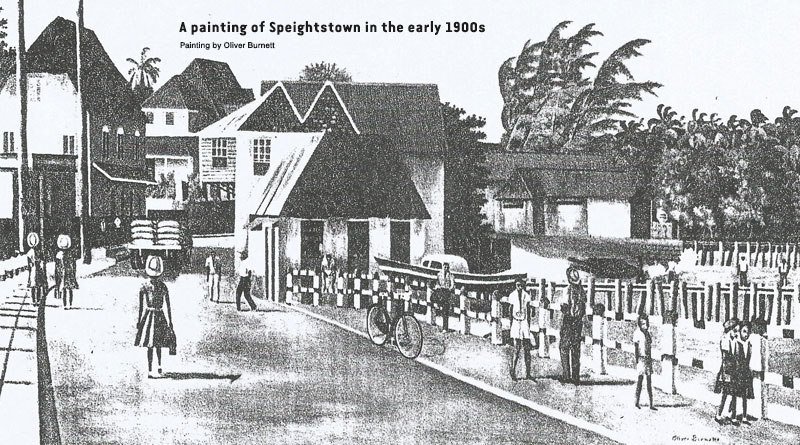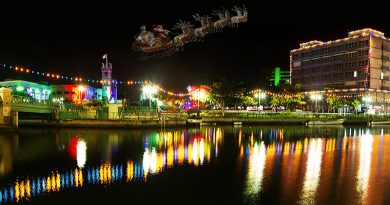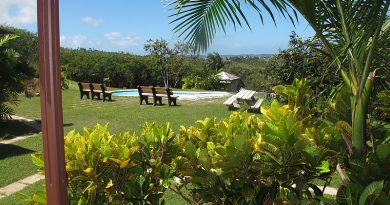Don’t Visit Speightstown Without Reading This
To appreciate one of Barbados’ oldest towns, you should know about its history, Speightstown Barbados. When Barbados was first settled, almost the whole population lived close to the coast extending from Oistins in the south, to St. Lucy in the north. Grants of land were normally for a specified sea frontage, and were a mile and a quarter in depth.
Mile And A Quarter
This probably explains the derivation of the name “Mile And A Quarter” given to that district in St. Peter at the junction of Highways 1 and 2A.
As we can see from Ligon’s map, there was a large concentration of population in St. Peter and in St. Lucy. Because of the poor communications by land, planters wanted to bring in their imports and ship their produce from the nearest point possible.
See Barbados Historic Garrison Tunnels – CLICK HERE
It was therefore natural that Speightstown, with a good harbour, developed as a port and also as the commercial centre for the northern part of the island.
According to tradition, Speightstown, sometimes called Spikes Town, derived its name from William Speight, a local landowner who had the distinction of having been a member of the Island’s first General Assembly when this was instituted in 1639 by Governor Henry Hawley. At least two of his property transactions dating from that period are still on record. What are our present ministers doing? Click Here.
One of these shows that on November 3rd, 1641, Speight purchased from a certain John Dyer “one plantation with six servants and some hogs,” for which he agreed to pay 20,000 pounds in weight of “good cotton or tobacco” in two equal instalments.
William Speight Died Around 1652
Most of Speightstown’s early trade was reputedly with the English port of Bristol, on which account the town acquired the alias of Little Bristol. The import trade must have been quite considerable, for a statute enacted in January 1654/55 complained of the great obstruction being caused on the wharves and landing places there (as also at Bridgetown), on account of the slowness of “merchants, storehouse keepers, and other persons” in taking away landed merchandize and other commodities. This has a familiar ring even today about the Bridgetown port or the air cargo terminal at Grantley Adams International Airport.
Oistins – The Royalists, Food, Fun & Entertainment – CLICK HERE
Fined 100 Pounds of Sugar
At that period there were also environmental problems of another kind. Only a year later the townspeople were accused in another statute of having become so negligent in maintaining their streets that these had become impassable and even dangerous during rainy weather. All householders were given three months in which to make the roadway in front of their premises “firm and passable” in all weather conditions, by the use of gravel or similar material, and to clear away all lumber tree stumps, and other obstructions.
Anyone who failed to comply with this order was liable, on conviction, to be fined 100 pounds of sugar for each day that his section of the roadway; remained unpaved after the expiry of the time limit.
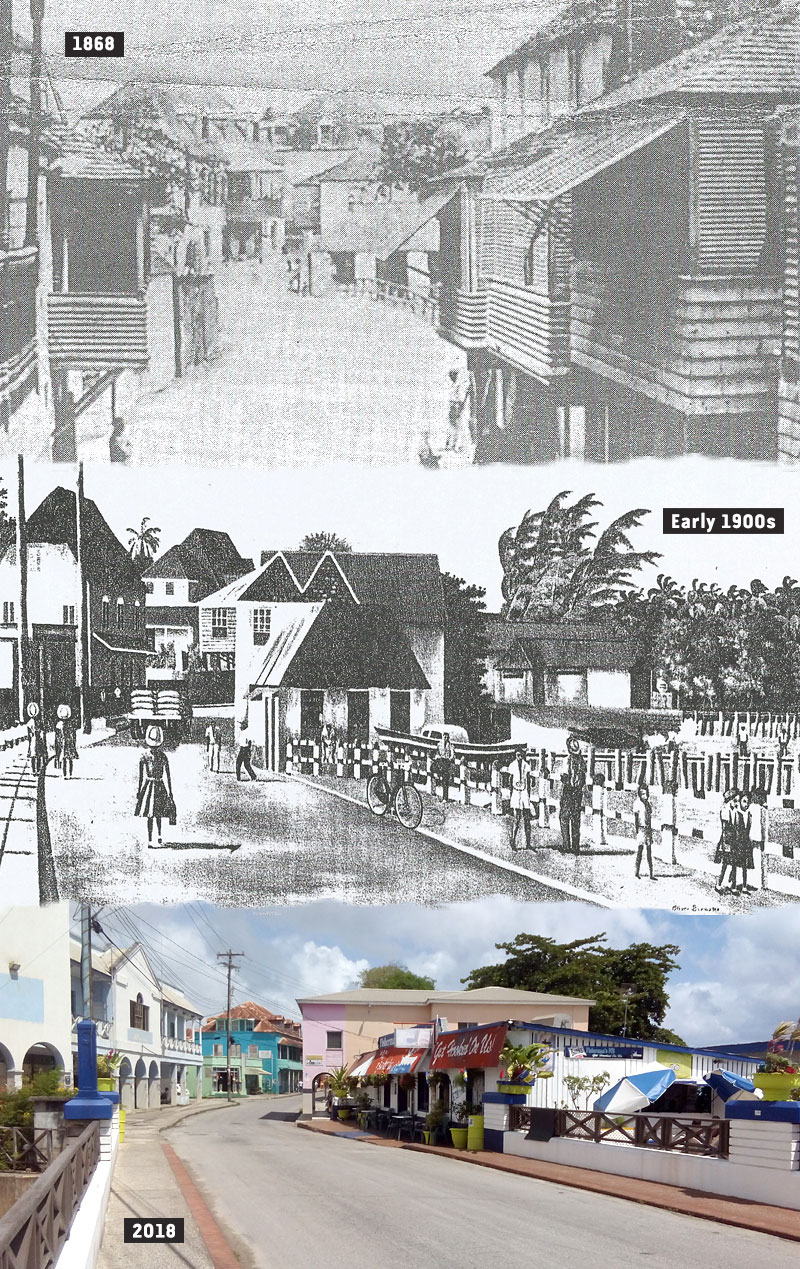
By the close of the 17th century conditions in Speightstown must have greatly improved, because after Father Labat, a Frenchman, had visited the place in 1700 he was able to record that it was: “a very attractive little town, with well built houses and straight wide streets and many shops and taverns”.
This certainly reflected favourably upon the character of the townfolk, for at that period their number was quite modest. In 1695, only five years earlier, Governor Francis Russell had written and informed the Council of Trade and Plantations in London that Speightstown was “computed to contain 10 Quakers, 20 Jews, and 40 Christians, fighting men.” He, of course, meant families.
Jews, incidentally, must have begun settling there shortly after they arrived in the Island in 1654. Certainly, a synagogue had been established there before 1669/70, because in a letter dated February 28th that year, Nicholas Blake, a planter, informed King Charles II, inter alia, “the Jews have their synagogues”.
Barbados Wasn’t Always A Gem For Me – CLICK HERE
One of course was in Bridgetown; the other in Speightstown. The latter was demolished in July 1739 by a riotous mob and, it seems, was never rebuilt.
One of the merchants of early Speightstown Barbados who clearly did quite well in business was a certain Peter Hancock. In his will, dated December 4th, 1679 and proved on April 3rd, 1680 he bequeathed his “mansion house” and the 21 acres of land attached to it for the founding and maintenance of a grammar school for poor boys.
Visit – The Garrison Historic Area with George Washington
These scholars, he stipulated, should be provided with “coats of grey serge or stuff, all of a fashion”. In other words: a uniform. If Hancock’s benevolent intentions were carried out at all, the school cannot have flourished for very long, because the historian John Oldmixon mentioned around 1707 that he had been informed that the school was “going to decay, if not already a heap of ruins.”
Finally, in August 1768, in response to a petition, the St. Peter’s Vestry was granted statutory permission to build the parish Rectory, on the site.
Apart from its normal commercial activities early Speightstown established a reputation for itself as the centre of the island’s fishing industry, particularly as regards, to flying fish. One traveller, writing in the European Magazine in 1794 about a trip he had made to Barbados five years previously mentioned that in the island these fish were popularly called Spike’s Pigeons, “as they are caught in the greatest numbers off the coast of Spike Town”.
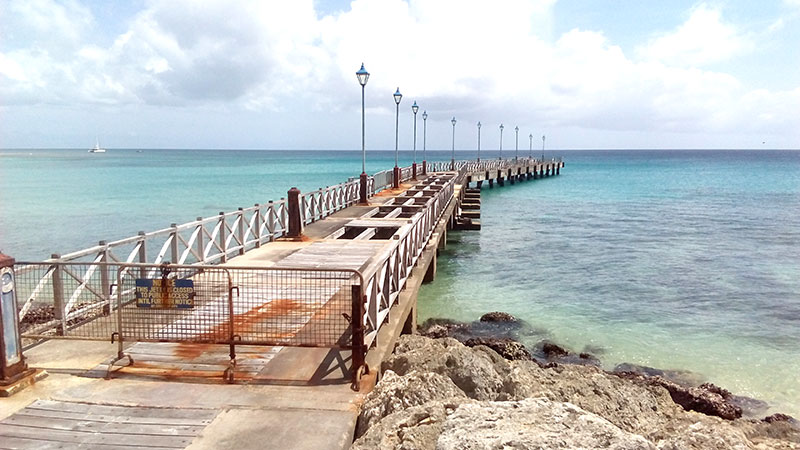
Speightstown also became the chief whaling station in Barbados but by 1912 it had become the only one of several that existed in the island.
Certainly, in the 18th century, if not earlier, many of Speightstown’s families depended upon fishing for a livelihood. We find that in June 1777, during the War of American Independence, when an enemy privateer seized several boats engaged in fishing off the coast and carried them and their crews off to Martinique, some 42 irate citizens immediately petitioned the Government asking for steps to be taken to reclaim them.
An envoy was duly dispatched to Martinique to negotiate for the release of the boats and fishermen.
It is interesting to note that in the same petition, the signatories, who included several merchants, mentioned being obliged to keep and make use of “large freight boats a -1 other craft” for the convenience of conveying their goods and merchandize to and from St. Michael’s Town (Bridgetown).
What Are Visitors Saying About Barbados
I have been to the Barbados many of times and I have to tell you the beauty of it is beyond my imagination. To anyone reading this…Read More
On our first trip to Barbados we fell in love with the island and the people. After a tour we did something I said I would never do- bought a week in a timeshare! We now tell people we are 1/52 Bajan…Read More
The scuba diving is excellent! Beautiful fish, a sunken ship, lots of fish. This is my favorite Carribean Island by far. Villas can be rented for a very reasonable price. See you there!…Read More
Most beautiful place we have ever been. We felt we had a spell cast on us and now can’t get enough! We stayed on the South coast but travelled over the island and just loved it…Read More
Export and Import Trade
Quite clearly this tells us that Speightstown had, for some time, ceased to be the important port it had been in earlier days, and was now obliged to conduct its export and import trade via the port of Bridgetown.
Despite its smallness, both size and population, Speightstown was not without some pretensions to culture. In July 1787, for example, the historian and journalist John Poyer, a native of the town, started a circulating library there — the membership subscription being five dollars per annum. We do not know whether this enterprise died with him in 1807.
Writing in April 1867 — to The Times, a correspondent mentioned that “Speightses” then boasted public “READING ROOMS” whose rules were said to make them very exclusive, but which, nonetheless, were not often visited by the better off classes.
In 1884 the Reverend Greenidge, an Anglican clergyman of St. Lucy’s parish, organised a scheme for lending books to residents of St. Peter’s. Finally a branch of the Barbados Public Library was opened in Speightstown in February 1905.
At various times in the past Speightstown has ventured to cater even to the performing arts. Around 1818 a Mrs. Webster operated a theatre there. Then around 1841 there was a “Merton Hall,” and in the 1860’s, an “Archer’s Hall”.
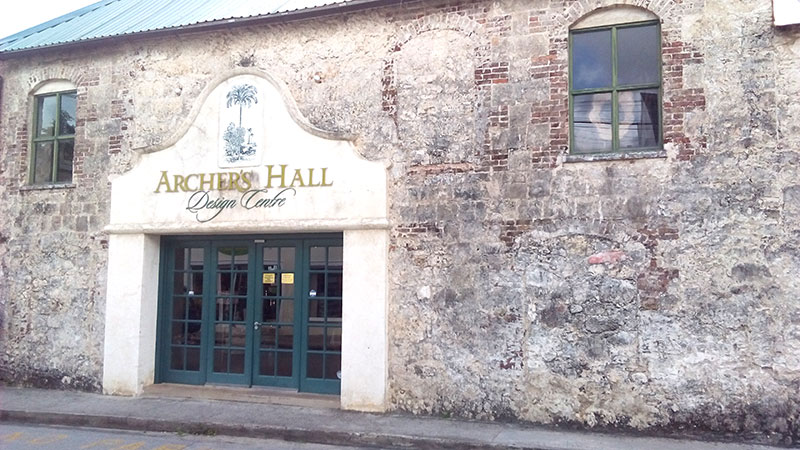
In 1843 the town’s limits were extended by statute. This measure was necessary, it was stated, because “The vastly increased habitations and streets annexed thereto, — are not included in the local rates — although the occupants thereof have enjoyed all the advantages of location and trade”. The limits were again extended by later statutes enacted in 1874, 1891 and 1909.
It is well known that Speightstown was once thought by some persons to be sufficiently important as to merit representation, in its own right, in the Island’s General Assembly. But it happened that in June 1878 Mr. William G. Ellis, the then Senior representative for St. Thomas, gave notice in the House of a Bill to amend the Representation of the People Act to make the town a separate constituency.
The Bill was, however, not proceeded with, and the historic old town still forms part of the constituency of St. Peter’s.
Anytime you’re traveling out of town please visit Speightstown in the heart of the north of Barbados.
You might be interested to buy some real estate or just take some vacations in this rich place of Barbadian history. Lots of things to do while you’re there.
If you need a place to stay or a vehicle to drive ➡ CLICK HERE.
Prime Minister's Ideas Forum #2: Alexandra School in St. Peter
Prime Minister's Ideas Forum #2: Alexandra School in St. Peter
Posted by Mia Amor Mottley on Wednesday, February 5, 2020

